
Review on 🔧 Alumilite High Strength 2: Premium Mold Making Rubber for Exceptional Results by Doris Tran

Great silicone! i love things!
I just got into resin casting and mold making and decided on this rubber because of its high tear strength, high elasticity and high temperature resistance. I've read some bad reviews about this rubber but haven't seen anything that would stop me from buying it again. Any errors were due to my lack of experience and a consequence of the way I made the molds rather than the material they were made from. Alumilite High Strength 2 Heavy duty rubber for making silicone based moulds. It is a two component system, which means that another chemical must be added to effect vulcanization (or "cure", ie solidification). This chemical is called a catalyst and comes with a small spoon and two small measuring cups. The mixing ratio is ten parts rubber to one part catalyst. I find it useful to use the milliliter graduations on the cup and measure the gum 25 milliliters at a time as the cups are graduated in 2.5ml increments. So if 25 ml of rubber is needed, 5 ml of catalyst is already marked. on a cup. two are available. I use one for the rubber and the other for the catalyst. Liquid rubber is a thick, very sticky white liquid. The catalyst is light pink in color with a faint smell of alcohol, not unlike cheap wine. When mixed in the correct proportions, catalyzed rubber is pale pink in color and almost completely opaque. Here is a list of the pros and cons of this rubber: Pros: ++ Ease of use; Mixing is not as difficult as I expected. I haven't had a case where the rubber hasn't cured due to poor compound.* Very strong rubber has good elongation (elongation) and high heat resistance. I put the lighter on a piece of rubber for 8 or 10 seconds and it just burned and the piece turned to powder but the scrap was still pretty strong. I understand (although I haven't tried) that rubber can withstand the casting temperatures of low temperature alloys like tin. It certainly easily tolerates the heat generated during curing of the resin I trust (true according to other readings) - platinum silicones are sensitive to sulfur and will not cure in its presence. It doesn't even stick to foamed MDF, the most porous material I've tested it on. Gently removed from the surface of an old plywood workbench I use.* Reproduces precise detail in high resolution. Makes good crisp copies of objects * Thin rubber and does not require vacuum degassing (although I understand this is always recommended when possible. I HAD a few small bubbles that got into my molds and of course a few more. I don't chalk it Very experienced mold makers have a way of removing air bubbles from the silicone after pouring and limiting the bubbles that get trapped during pouring Expensive at just a pound Silicones tend to be expensive I've found so is it honestly doesn't I wear vinyl gloves when mixing to avoid damaging my skin *Long Curing Time: That's the biggest issue I have with this silicone a full cure (that's the essence of t where all the chemical reactions between the gum and the catalyst stop. You don't have to wait until z will end to leave impressions.) It would be more convenient if the gum after 2 o which sets 4 hours; but it takes a whole day. Unfortunately, that's the chemistry and that's the rule with this rubber. This is not a hobby for people in a hurry or people who want instant gratification. * Difficult to remove from mold container. I had to cut two containers (plastic vitamin bottles with the lids cut off) to get the shapes out. Even with a thin layer of petroleum jelly applied to the next container, I had trouble removing it. It seems to stick easily to the material you are molding it from; At least if it's plastic. I love this rubber and would buy it again. The biggest downer for me is the cost and long curing time. Both would have kept me from buying again. I've made a lot of bad molds because I couldn't make them - it was my fault, not the rubber's fault. Most of these batches didn't work for me because I placed my mold too close to the container wall causing a thin spot (you can't see the inside to reposition once it's in the gum) or because I used different ones cut shapes . opens badly. Due to its somewhat high cost, I will not be able to buy more immediately, although again this is a fact of silicone rubber of this type. This is not a HIGHER price. I'm on a tight budget. Another possible problem not mentioned above was that when making a mold with light paste the object tended to float when I wanted it to stay deep in the rubber. I solved this problem by using a hot glue stick which I pressed onto the top of the form object and glued the other end to a piece of wood on top of the form to hold it in place. The stick creates a hole in the mold when taken out, so this is for molds that are poured from above. As I mentioned above, silicone also tends to stick to the inside of the container you're molding in. Pros use clay to shape their containers or use thin pieces of corrugated plastic. I didn't have them on hand, so I used cut-off vitamin bottles and then a few small containers from cheap semi-consumer crockery I bought. I had to cut out the vitamin bottles to get the shapes out. So if you want a round shape you can do that if you are willing to donate a bottle. The Tupperware didn't need to be cut as I had it bend enough to release the shape. I would recommend this rubber for a beginner or intermediate mold maker. If you don't have to worry about needing very high strength (if your molds are going to be simple, like plastic bodies, and don't have a lot of undercuts, you don't have to worry about the rubber cracking) or if you don't worry If you need to do about sulfur, which keeps your molds from healing, you can also try other toppings like Oomoo, which are highly regarded among crafters. It costs about the same, so there's no real price advantage. It depends on your specific needs. I assume most of the cons I have mentioned about this rubber apply to most or all silicones. I hope this helps someone.
- Handicrafts and sewing
- Questionable purchase for seniors
New products
Comments (0)
Top products in 🗿 Sculpture Supplies
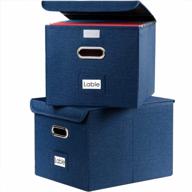
Organize Your Office Space With PRANDOM Collapsible File Organizer Box - Set Of 2, Royal Blue, Letter Size

27 Review
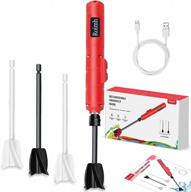
🌀 Efficient Handheld Epoxy Mixer for Bubble-Free Resin Mixing - Perfect for Tumblers, Molds, Glazes, and Paint! (Includes 4 Paddle Attachments)

27 Review

12-Set Dry Erase Markers For Whiteboard - Dual Tip & Ultra Fine Point, Erasable Markers For Kids

53 Review
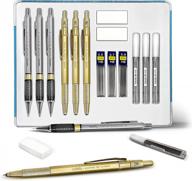
14-Piece Bellofy Mechanical Pencils Set For Drafting, Drawing & Writing - 0.5/0.7/0.9Mm Leads 2B/HB/2H Graphite Lead Holders + Refills, Erasers & More!

25 Review
Another interesting products
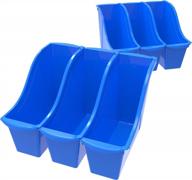
Organize Your Space With Storex Small Book Bin 6-Pack In Blue For Home, Office & Classroom Use

35 Review

6-Pack Erasable Highlighters W/ Double Head, Chisel Tip & Assorted Colors - Smooth Writing!

29 Review
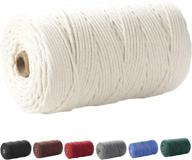
3Mm X 220Yd Macrame Cord - 100% Natural Cotton Rope For Handmade Plant Hanger Crafts

32 Review
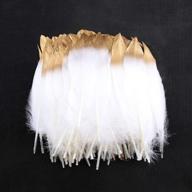
Sowder Natural Goose Feathers Clothing Accessories Pack Of 50 (Gold Dipped White)

33 Review

